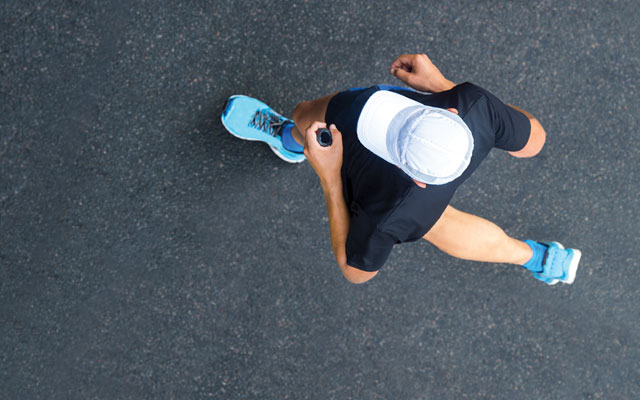Read Before Running

Physical therapist Michael Silva, MS, CSCS, has worked with runners from beginners to Olympians. In his 20+ year career, he’s seen a lot of running injuries, many of which can be prevented. Here are his tips for healthier running.
Almost anyone can be a runner.
“Most people can make running part of their lives. However, running safely does require preparation. The biggest mistake that people make is to just start running without building up slowly. In a mile, the average person takes 1,200 steps—it’s a lot. It’s a good idea to start with a walk/run program, where you walk for four minutes, then run for one. You might do that for a while, then progress to less walking and more running over time. Don’t forget a strengthening routine to build your muscles.”
Running is not fast walking.
“It’s more like leaping and jumping. People often think if they can walk five miles, they should be able to run five miles. When you are running, one or both feet are off the ground at all times; you are never on two feet like walking. Many people warm up for a run by walking, but that’s not actually preparing your body in the right way.”
Warming up helps prevent injuries.
“A good way to warm up for a run is to massage your muscles with a foam roller for about three minutes, focusing on the lower body. You can usually get a foam roller for less than $20. Then do a dynamic activity for three minutes that’s similar to running, like jumping jacks or skipping rope. Then walk/run or run, depending on your running level, and stretch afterward.”
It isn’t bad for your knees.
“If you don’t have strong hips and feet, your poor knees take a beating. Most of the knee injuries that I see are not actually knee injuries—it’s more likely to be a foot or hip issue. So feeling better often means strengthening the real problem area and not chasing the pain.”
Run only a few days a week.
“Even the fastest people on earth shouldn’t run every day. Most of us who run for fitness only do so a few days a week. Many injuries happen when people push themselves too hard. Rest and recovery, including sleep and good nutrition, are really important.”
It’s great way to relieve stress.
“Running has great benefits for your physical health, including your heart and bones. It’s also great for your mental health. I don’t think there’s another activity that gives you that same stress relief. That’s why people get the 'runner’s high' after a good run.”
You can run as a family.
“Running is an activity that the whole family can do together. I see a lot of families where it gets passed down through generations as an activity.”
Watch out for overstriding.
“A common problem I see is overstriding, which means that your foot lands too far out in front of you each time it hits the ground, which results in hitting on your heel. That can put extra stress into the body—about two and a half times your body weight. If your knees are bent a little bit and you hit more on your mid-foot, you are more centered under your body. That decreases the impact. Try taking at least 180 steps per minute to help improve your foot position and reduce injuries.”
Find out more
You can see examples of foam rolling, stretches and other exercises as well as other information on running on Michael Silva’s YouTube page.